NJFSC Chapter #44S..........PHS Affiliate #1A..........APS Affiliate #95 |
Society & Member's Galleries....
As we continue to add more galleries, some will be for public display while many will be reserved for members access only.
Featured Covers Gallery
May 2013 Issue of the NJPH Journal STAGE OPERATIONS AND THE MAILS IN NEW JERSEY©
By Steven M. Roth (© 2013. Steven M. Roth)
Prior to the Revolutionary War, major travel in the American colonies was restricted
for the most part to the waterways surrounding and flowing through the colonies, and the
Atlantic Ocean and major rivers served the colonies well for intra-colonial and inter-colonial
communications for as long as settlements remained along the eastern seaboard. |
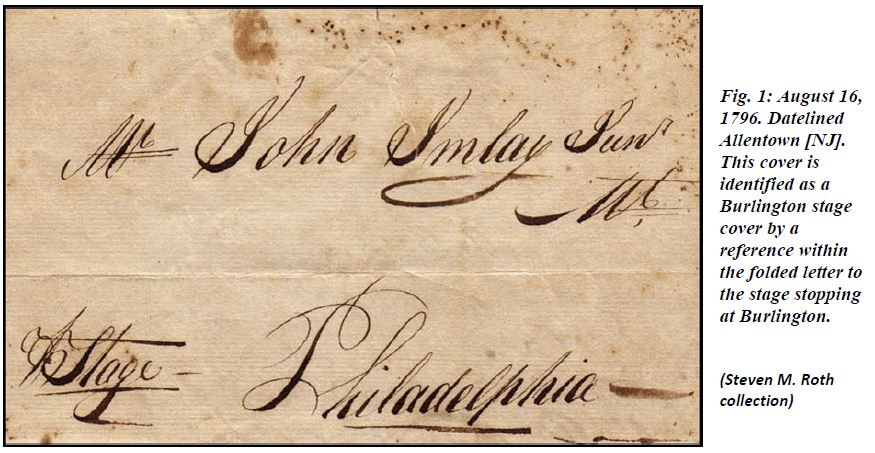
Fig. 1: Fig. 1: August 16,
1796. Datelined
Allentown [NJ].
This cover is
identified as a
Burlington stage
cover by a
reference
within
the folded letter to
the stage stopping
at Burlington.
|
Figure 1 is an example of a cover carried by the Burlington stage. The folded letter originated
in Allentown, NJ and was privately carried from there to Burlington, where it was turned over
to the Burlington stage line for carriage to Philadelphia.
When travel in the Colonial Period was not on water, it tended to be on horseback.
Goods often were transported by pack-horse. Gradually, as the amount of freight increased,
carts and wagons replaced pack-horses for the carriage of freight. Roads were widened and
improved, and plank surfaces added. Eventually, the wagons began to carry passengers as
well as freight.
As the number of passengers increased, staging freed itself from the freighting
business and fell into the hands of inn keepers who catered to the needs of passengers, thereby
providing themselves with a steady source of income for their inns and taverns. Gradually
innkeepers bonded together to form stage lines with scheduled staging stops for meals and
lodging at the owners’ inns. This became the pattern for future staging operations.
The most important lane of land travel in Colonial times was across New Jersey,
connecting New York and Philadelphia. As elsewhere in the colonies, the first stage service in
New Jersey was provided by wagoners whose chief business was to convey freight back and
forth between the two anchor cities. In the Colonial Period, this meant conveying goods
between the depots at Brunswick or Perth Amboy on the eastern side of the state and Trenton,
Bordentown, or Burlington on the Delaware River.
The road between Perth Amboy and Burlington opened in 1684, and likely was the
first land route upon which provision was made for public transportation. A man named Dell
received from Governor Andrew Hamilton the exclusive privilege of driving a wagon
between these towns to convey public goods. Dell thereafter proceeded to inaugurate carriage
between New York and Philadelphia. Later, Lord Cornbury, who succeeded Hamilton in 1702
as governor, gave Hugh Hardy, a merchant in Burlington, the exclusive right to convey goods
on this route. Not until 1729, however, do we find the first public solicitation over this route
for passengers. A newspaper advertisement for Redford’s ferry over the Raritan River at Perth
Amboy stated “. . . a Stage Wagon kept at the said Ferry, for Transporting of Passengers and
Goods from thence to Burlington, whenever freight presents.”
From Stage Wagons to Stage Coaches
When staging started, the first vehicles in the 18th century were heavy wagons whose
main business was to carry freight. These eventually gave way to the lighter Jersey wagon
produced primarily in Newark. The Jersey wagon passed through successive modifications for
the comfort and convenience of passengers until it was replaced by the oval Jersey stagecoach
which was distinctive in style, and often seen in newspaper advertisements for the carriage of
mail. It was referred to as a ‘post coach’.
|
 |
Contract Carried Mail vs. Non-Contract Carried Mail
Stage mail carried in or through New Jersey was of two types: mail carried by stages
having a mail contract and mail carried by stages not having a mail contract. Among the
stages carrying mail under a mail contract, there also are two types of mail to consider: (a)
mail that was processed by a post office, placed in a locked box or bag, and the box or bag
given to the stage driver, and (b) loose letters handed to the driver by senders, rather than
taken by the senders to a post office. This latter group of letters often contained a redundant
admonition such as “per stage” or its equivalent.
In the case of mail locked in a box by the post office, this would appear to be like all
other mail to collectors and generally does not contain any special post office notations or
senders’ admonitions indicating carriage by stage. One can only determine stage carriage of
such locked-box mail by ascertaining the routes of such letters and becoming familiar with the
mail contracts for such routes.
Letters carried by a stage not having a mail contract were equivalent to loose letters
discussed above, and were carried either as an accommodation to the sender or for
remuneration by the driver or a passenger. Such letters often were marked to indicate stage
carriage, and were illegal beginning in 1827 whether or not remuneration was paid for such
carriage.
Stage Boats
Stage boats were ferrys that were large enough to carry one or more stage wagons or
stage coaches on board. These vessels were used in the west to cross the Delaware River to
and from Cooper’s Ferry (present day Camden) or to and from Trenton, Bordentown and
Burlington to go to and from Philadelphia, and in the east to and from South Amboy to travel
to and from Lower Manhattan.
The Role of Inns and Taverns in Staging
Although the carrying of freight initially provided the impetus for developing staging,
in due course the carriage of passengers as a way of providing taverns and inns located along
the stages’ travel routes with a steady stream of customers proved to be the strongest
motivating force. Indeed, many of the first stage lines and ferries were created by consortiums
of tavern owners who scheduled the staging runs and ferry crossings to coincide with the
eating of breakfast, lunch or dinner or the lodging of passengers overnight at the owners’ inns.
New Jersey’s Principal Stage Roads
There were three principal stage roads across New Jersey. There was the Lower Road
(also called Lawrie’s Road) which ran through Burlington, Bordentown, Walnford, Hightstown,
and Cranberry to Amboy. There was the Upper Road which ran through Trenton, Princeton,
Brunswick and Elizabethtown to Amboy. And there was the Old York Road, to the northwest of
the Upper Road, which ran from Philadelphia and then New Hope to Coryell’s Ferry (present day
Lambertville) and to Flemington, Somerville, Plainfield, Scotch Plains and Newark.
|
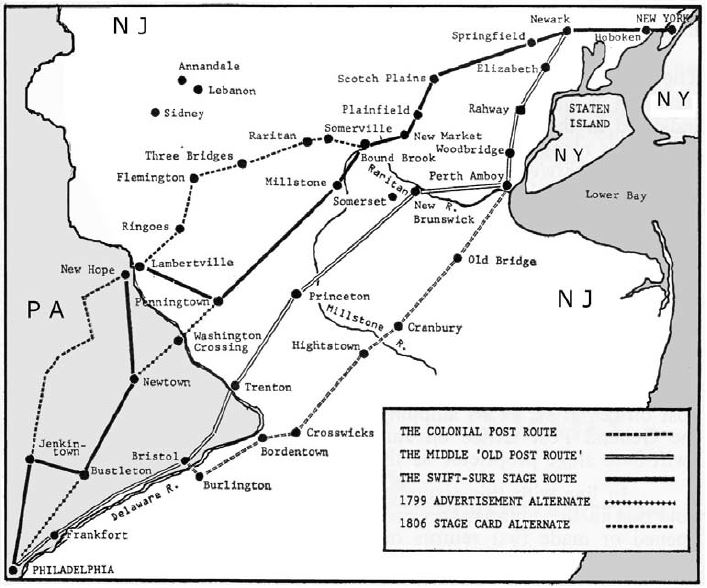
Fig. 2 Early Stage Routes across NJ, from a map prepared by Calvet M. Hahn
|
The first stage on a more northerly route, between Trenton and Brunswick, was
established in 1738. It ran twice each week and it, too, directed its ads toward passengers: “. . .
the wagon will be fitted up with Benches, and Cover’d over so that Passengers may sit Easy
and Dry.” The service was suspended in 1739, but renewed in 1740.
The year 1740 also saw the creation of the Bordentown & New York stage line started
by Joseph Borden, Sr. This line operated until the late 1790s. Borden’s goal was to establish
a stage line from Amboy Ferry to Bordentown so that he might head off Burlington and
Trenton as depots on the Delaware River and capture the New York to Philadelphia trade.
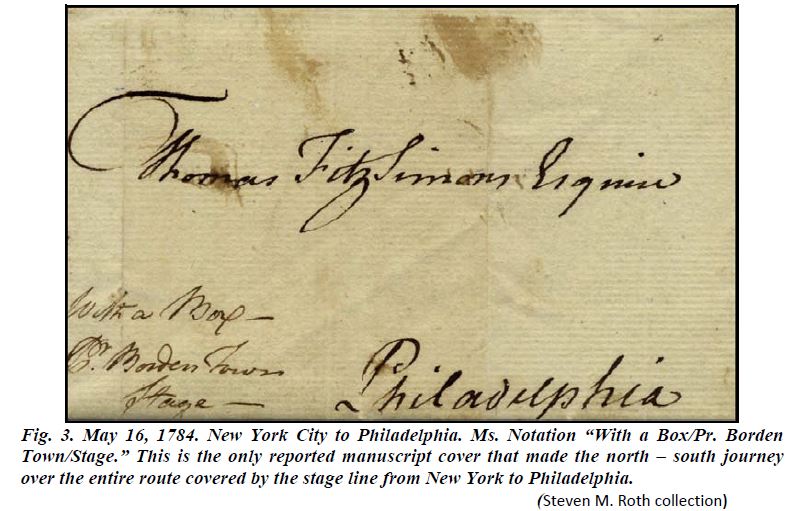
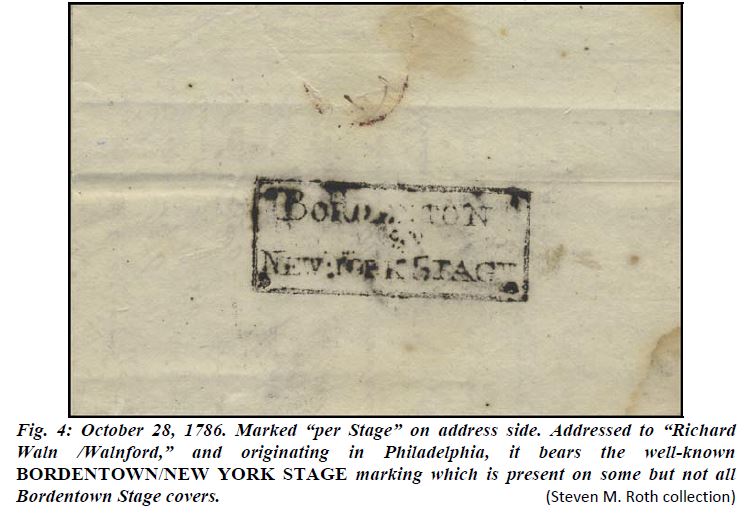
Borden, in an advertisement that appeared in 1750, offered his clientele a through trip
from New York to Philadelphia, declaring in his ads that his line would operate on a set
schedule at both ends of the land route, running stage wagons in both directions and
connecting with a stage boat to cross the Delaware River to and from Crooked Billet Wharf in
Philadelphia, as well as a ferry between South Amboy and lower Manhattan.
It is not always possible to tell if a cover was carried by the Bordentown line or by one
of its rivals. Figure 5 is an example. Although addressed to Bordentown, this privately carried
letter might have been carried by the Burlington stage line and thereafter taken privately to
Bordentown.
|
Although the Bordentown line expected its chief competition to come from the
Trenton-Brunswick stage line, it actually came from the Amboy-Burlington stage. All three
stage lines used Amboy Ferry, located near South Amboy, as their stopping place. The
Trenton-Brunswick line stopped at the tavern operated by Obadiah Ayers; the Bordentown
line stopped at the rival tavern operated by John Cluck. It is not reported which tavern
serviced the Burlington line. In the end, the Bordentown and Burlington lines prospered and
survived while the Trenton-Brunswick line, which required a much longer water passage than
its two rivals, foundered.
In 1756, however, and for several years thereafter, the Trenton-Brunswick line
resuscitated itself and again became competitive as it advertised that its stages would follow a
new route between Philadelphia and Trenton that would, it claimed, reduce the water part of
the passage and increase the land portion of the travel. Soon thereafter, the Trenton-
Brunswick line advertised additional improvements at the northeastern part of the trip from
Brunswick through Woodbridge to the Blazing Star Ferry on Arthur Kill.
In the next decade the Trenton – Brunswick line again advertised a land extension
between Trenton and Philadelphia to replace the slow passage up the Delaware River, and
demonstrated the cooperative nature between the coaches and the boats. The trip between
New York and Philadelphia across New Jersey for the first time was now made in two days.
From this time on, competition among stage lines was confined mostly to the northern
land routes while the southern routes and lines that combined land and water travel foundtheir share of business diminished. The Burlington – Amboy line was dropped for a time, but
was revived by Joseph Haight, a Burlington inn keeper, in 1770.
In the spring of 1773, two new lines left Philadelphia for New York four times a week– the Flying Machine line and the New Philadelphia & New York stage line. Both left
Philadelphia for Princeton, then headed to Paulus Hook (present day Jersey City). From there
they took the stage boat for New York. The return trip also was made four days each week on
alternate days.
Staging in New Jersey was suspended during the Revolutionary War with the
occupation of New York and Philadelphia by the British and the frequent military battles
within the state. But this was merely an interruption. Shortly after the British evacuated
Philadelphia, stage lines again commenced operations across New Jersey as far north as
Brunswick. In November 1778, Joseph Borden advertised renewed service by his stage boat
to Bordentown and then by wagon to Brunswick. In February 1779, John Wills announced
that he had re-established his line running from Burlington to Brunswick. In 1780, a stage line
commenced running again from Brunswick to Elizabethtown, thereby extending the route to a
point where water communication with New York City was again possible. Also in 1780,
Gershom Johnson of Philadelphia and James Drake of New Jersey renewed the land route
from Philadelphia through Trenton and Princeton to Elizabethtown, extending service to twice
each week. Another stage line opened at about the same time to connect with this line at
Princeton for Morristown.
Staging and the Mails During the Confederation Period
The natural increase in trade and travel after the cessation of hostilities formed the
incentive for the creation of most stage lines. In New Jersey where the combination of the
population, general business and trade, and the existence of the commercially successful anchor
cities of New York and Philadelphia made competition not only feasible, but also likely, so that
rival stage lines repeatedly sprang up. Indeed, in 1786, New Jersey found her roads so busy
with stage traffic that the state levied an annual tax in the amount of £150 on each stage line
that crossed the state between New York and Philadelphia. The tariff was hotly protested by
the Federal government, and the amount was lowered in the following year to £100. To appease
the stage line operators, the New Jersey legislature agreed that one-half the collected tax would
be used each year to improve stage roads. Finally, in 1799, the New Jersey legislature exempted
all stage lines from the need to purchase an operating license and pay the tax.
The greatest incentive to the development of staging came in 1785 when the Federal
government decided to contract with stage lines for the carrying of mail. This not only
resulted in steady income for the lines, but offered them the imprimatur of the fledgling
government in the form of semi-official status. This placed the power and authority of the
government and the greater interest of the citizenry behind the stage lines, especially during
the period of the ratification debates when the consumption of newspapers increased
dramatically. Now, people who rarely or never traveled by stage became interested in its
success because stages became the means by which news (in the form of mail and
newspapers) was received and forwarded. Members of Congress became sufficiently invested
in the expansion and welfare of the stage lines which vitally affected the interests of, and
received so much attention from, their constituents to grant mail stages special privileges such
as rights of way at ferry crossings.
Yet in the beginning, it was not at all clear that stages should be involved in the
carriage of mail, and the practice became a significant and heated controversy of the
Confederation Period, encountering opposition from Postmaster General Hazard as well as
practical difficulties. Eventually, stiff pressure on Congress from commercial interests and
Congress’ desire to increase post office revenues by eliminating the clandestine private
carriage of letters by stage drivers and passengers won the day. After significant debate,
Congress in 1785 ordered Postmaster General Hazard to employ stages in the carriage of mail.
Stages and the Carriage of Newspapers
A principal reason for the dependence of the Post Office Department on the country’s
expanding staging facilities was the burden of newspaper carriage. Until 1792, newspapers
had not been carried as part of the mails, but were privately carried by post riders or by stage
drivers who, with the silent acquiescence of the Post Office, made their own private
arrangements with the printers for remuneration.
The Post Office Act of 1792 made the first reference to the free exchange of
newspapers among publishers and for the rates of postage chargeable for the carriage of
newspapers in the mails. As the country became more populated and as the availability of
news became more critical to commerce and politics, the burden of transporting newspapers
in the mails via horseback became impossible to cope with and gave rise to the necessity of
using stages. This became clear in 1788 when Postmaster General Hazard put the mails back
on horseback and discovered to his dismay that one post rider could not service his route
using only one post horse.
Staging and the Mails During the Constitutional Period
Once Washington became President, the second major postal act under the
Constitution (Act of May 8, 1794), provided in Section 2, that,
It shall be lawful for the Postmaster General to provide, by contract, for the carriage of a mail
on any road on which a stage wagon or other stage carriage shall be established, on condition that
the expense thereof shall not exceed the revenue thence arising.
After this, there never was any question about the role of stages in carrying the mails except
to the extent technology interceded in the form of steamboats and railroads.
New Jersey Stage Lines
A fuller discussion of the interstate and intrastate NJ stage lines is included in our last
two journals, including a number of illustrated covers and advertisements. For full information
on these stage lines, please contact Secretary@NJPostalHstory.org to order copies of these issues.
See also our Gallery of New Jersey Stage Covers.
|
REFERENCES:
Act February 20, 1792, Sections 21 – 22
Advertisements of the New Line of Stages in New York Journal, March 1 and April 17, 1788
American State Papers, Post Office Department, Class VII (Compiled 1833), 21.
Journal Kept By Hugh Finlay 1773-1774, (Reprint Edition 1975), 18.
Journals Of The Continental Congress (Washington 1904-37), XXIII, 673.
NJ Archives, First Series,
New Jersey Gazette, November 25, 1778
New Jersey Journal, October 11, 1780
NJPH, Vol. 33, No. 4 (November 2005), Whole No. 160, 181, n.10.
NJPH, Vol. 39, No. 1 (February 2011), Whole no. 181, 4, n.2.
Patterson, Laws Of The State Of New Jersey (Newark 1800), 451
Pennsylvania Gazette, February 17, 1779
Rose, R., Mr. Rose prepared a slide talk for the Hamilton Township Philatelic Society in which he discussed
the current known scholarship concerning this stage line. The slide talk has been posted at
www.hamiltonphilatelic.org/presentations/bordentown.pdf, and is available as a pdf file for downloading
and copying.
New York Weekly Post Boy, January 8, 1758
Whitehead, W.A. East Jersey Under The Proprietary Governments (1875), pp. 235-237, 419.
|
Past Featured Covers
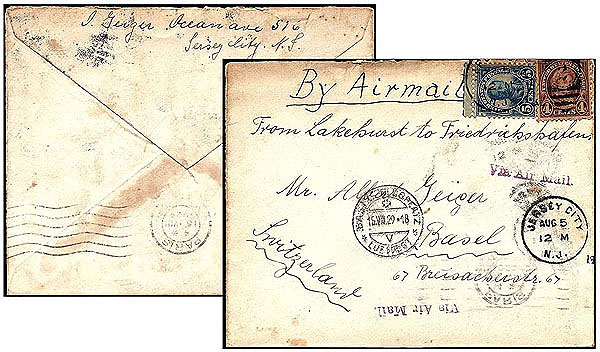 |
February 2013 Issue of the NJPH Journal INTENDED FOR THE GRAF ZEPPELIN BUT CARRIED BY STEAMER? A 1929 Jersey City Transatlantic Airmail to Basel Switzerland
by John Trosky
The first decades of the 20th century saw the dawn of a new age in mail transport, airmail. By
the late 1920s Read more..... |
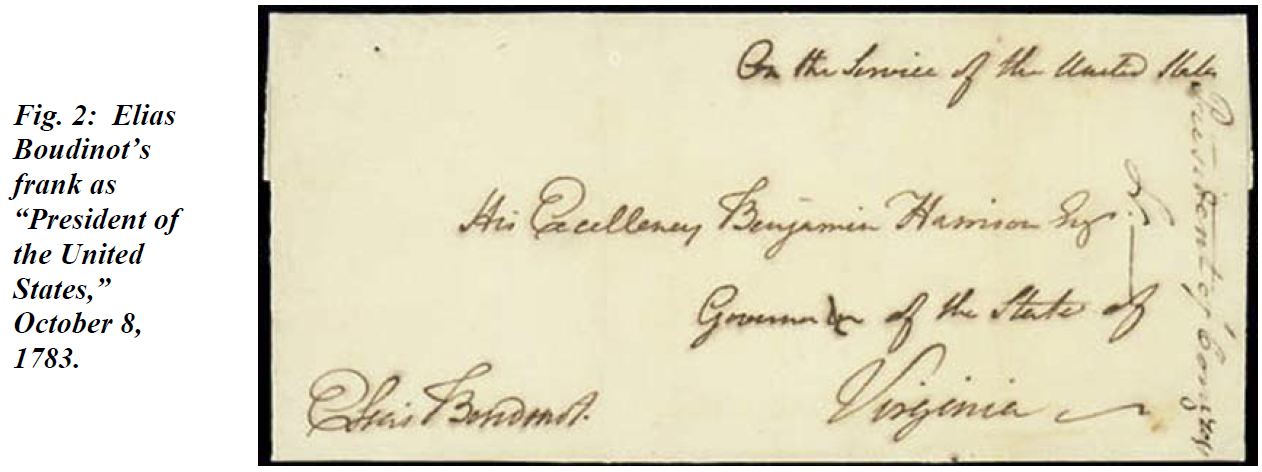 |
November 2012 Issue of the NJPH Journal LEGISLATIVE FRANKS OF NEW JERSEY by Ed & Jean Siskin
The franking privilege is the right to send and or receive mail free from postage.
Read more..... |
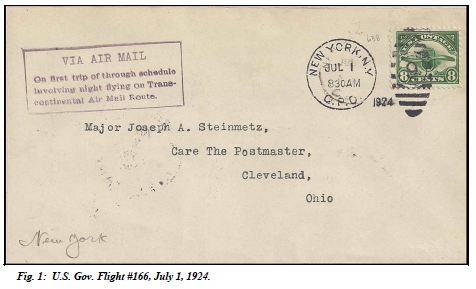 |
August 2012 Issue of the NJPH Journal HADLEY AIR FIELD, NEW BRUNSWICK. NEW JERSEY by Jim Walker
Early air mail service in the New York area used an assortment of air fields on Long
Island. Hazlehurst Field was the one in use at the commencement of Transcontinental Air Mail
Service in 1924 and was deemed inadequate due to smoke from city industries and ocean fog.
Read more..... |
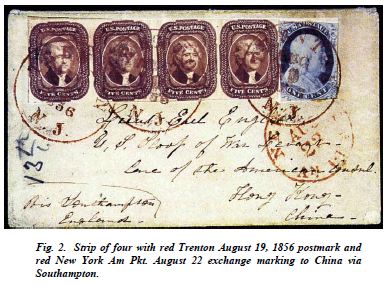 |
May 2012 Issue of the NJPH Journal FIVE CENT 1856 STAMP ON COVERS FROM NEW JERSEY by Robert G. Rose
Have you ever fantasized, as have I, of forming a collection of United States
classic stamps used on covers from New Jersey? If so, the task to put such a collection
together would be a real challenge....
Read more..... |
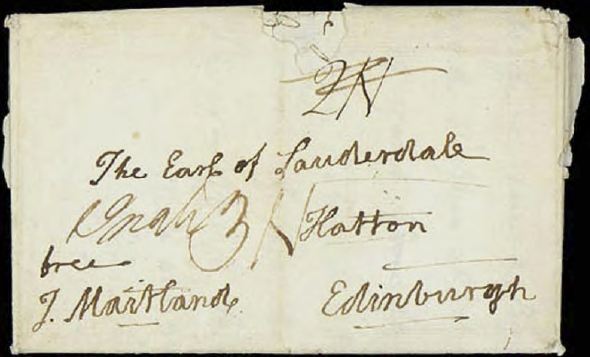 |
February 2012 Issue of the NJPH Journal A Wonderful Revolutionary Letter by Ed and Jean Sisken
In the Oct-Nov 1988 issue of La Posta, Tom Clarke wrote an article about a wonderful
Revolutionary War cover he had. Dated February 16, 1777, from New Brunswick, New Jersey...
Read more..... |
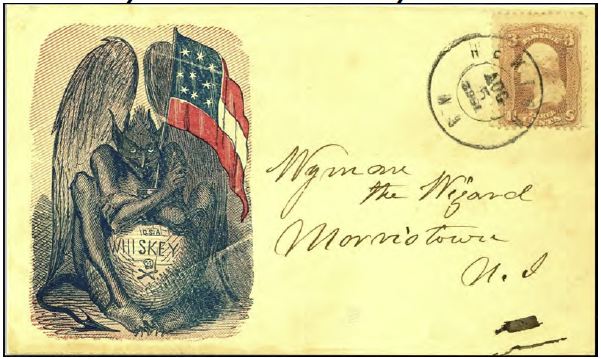 |
November 2011 Issue of the NJPH Journal New Jersey Civil War Covers -Wyman the Wizard!
If you were to conduct a detailed review of the 190 Civil War
patriotic covers illustrated in NJPH whole nos. issues 100 and 117, or the
online exhibit of covers shown at NOJEX, you can begin to see the
emergence of some interesting patterns among the covers. An obvious
pattern is that there are several different correspondences represented in
the illustrated covers. Read more..... |
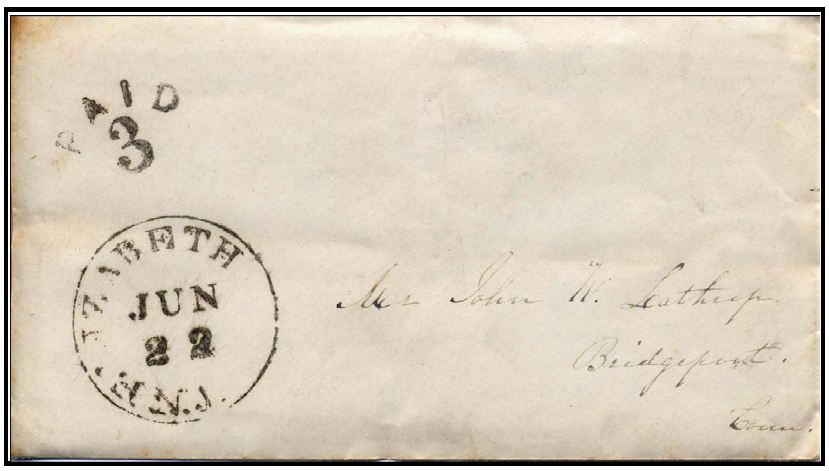 |
August 2011 Issue of the NJPH Journal New Elizabeth, NJ Marking
ELIZABETHTOWN STAMPLESS POSTMARK ALTERED TO READ “ELIZABETH”!
This newly-discovered Elizabeth postmark falls at the time the name was changed from
Elizabethtown to Elizabeth, and a new handstamp was created from an existing Elizabeth-town
postmark.
Read more..... |
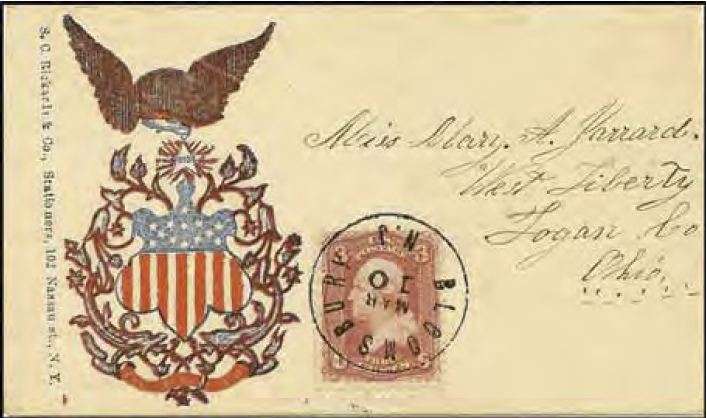 |
May 2011 Issue of the NJPH Journal Civil War Patriotic Covers from New Jersey.
The cover below is dated Mar. 10 from Bloomsbury, NJ to West Liberty, Ohio, with the imprint of S.C. Rickards, Stationers, 102 Nassau Street, N.Y., and shows one of the rare New Jersey Civil War patriotic images.
Read more..... |
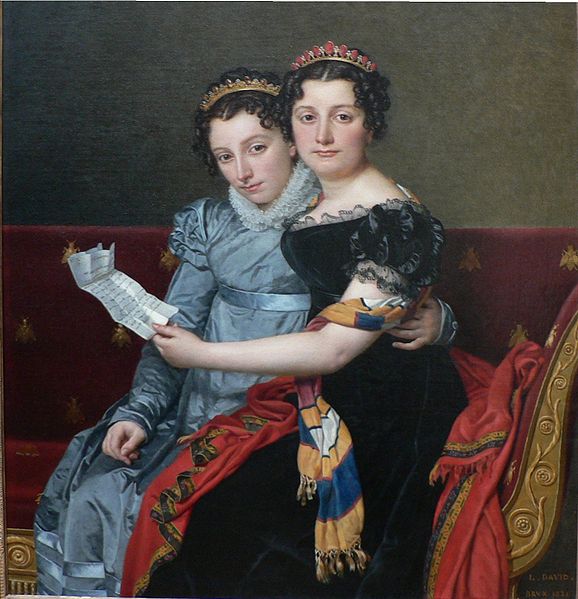 |
February 2011 Issue of the NJPH Journal A Folded Letter in art - was it from New Jersey?
This painting by Jacques-Louis David, painted in 1821, shows two Bonaparte princesses reading a stampless folded letter from their father, Joseph Bonaparte, brother of Napoleon. Was it written to them from New Jersey?
Read more..... |
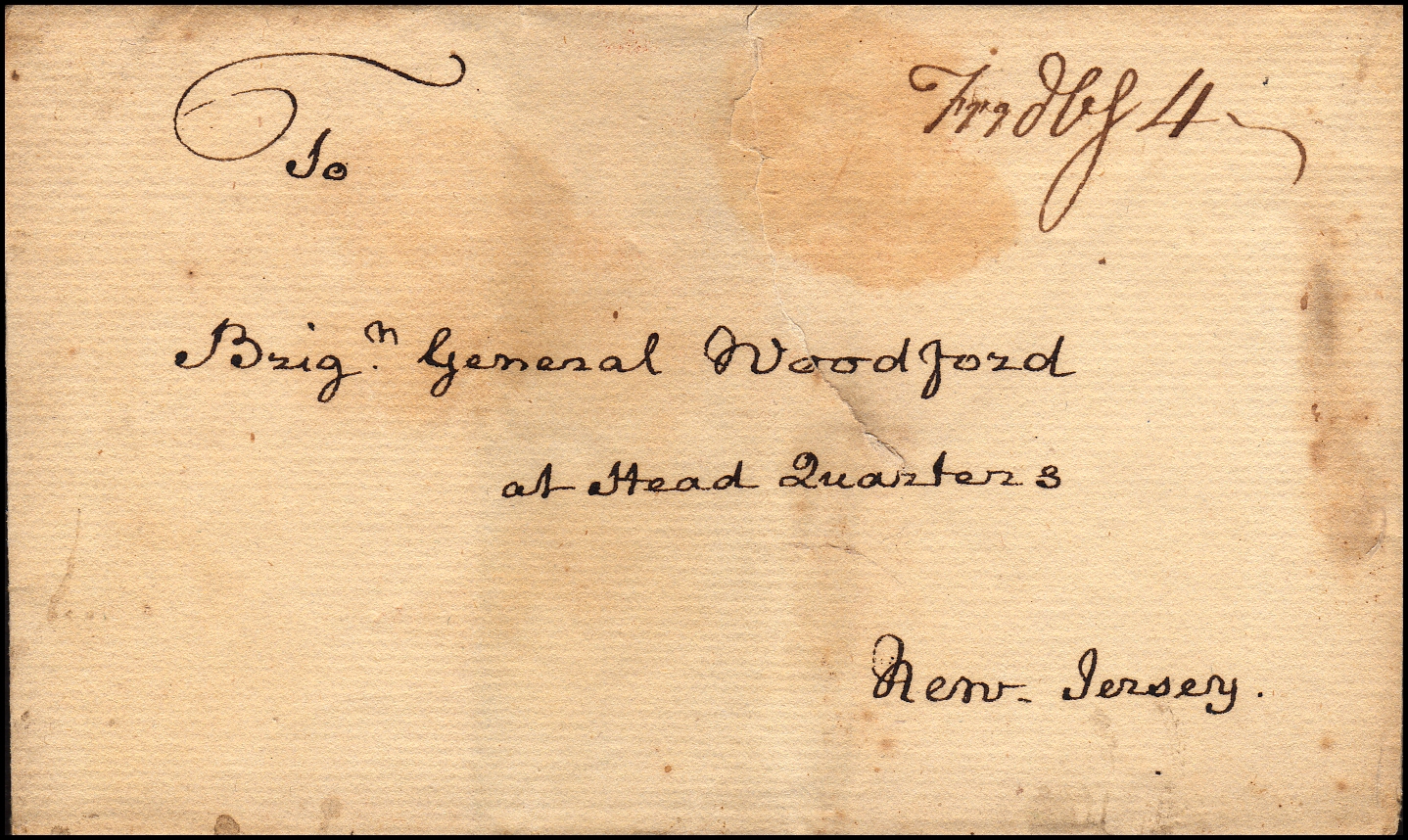 |
November 2010 Issue of the NJPH Journal REVOLUTIONARY WAR COVER
The cover of our most recent journal features this Revolutionary item, from Don Chafetz’s prize-winning exhibit of Morris County Mail Service, 1760 to 1850.
Read more..... |
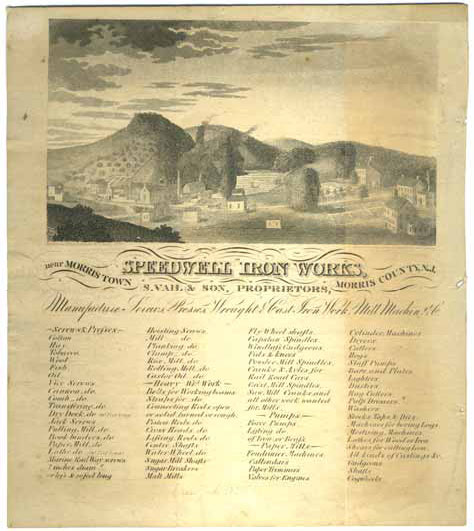 |
August 2010 Issue of the NJPH Journal NEW JERSEY ILLUSTRATED LETTER SHEETS
These items were made popular by the nice ones that exist from the California Gold Rush days, and those used during the Civil War, where they depicted contemporary scenes at the top of the letter sheet, the rest of which was then used to write a letter.
Earliest examples usually included an attached sheet and were used as stampless folded letters.
Later ones were more like letterheads, and were sent enclosed in envelopes.
Read more..... |
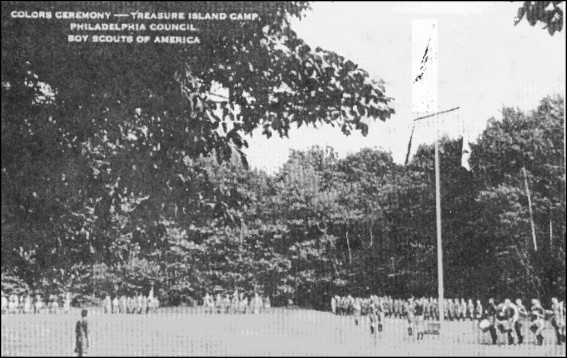 |
May 2010 Issue of the NJPH Journal Celebrates the 100th Anniversary of the Boy Scouts of America!
Treasure Island Scout Camp occupies a fifty-seven acre island in the Delaware River between Pennsylvania and New Jersey. The camp is operated by the Cradle of Liberty Council (formerly the Philadelphia Council), Boy Scouts of America. Read more..... |
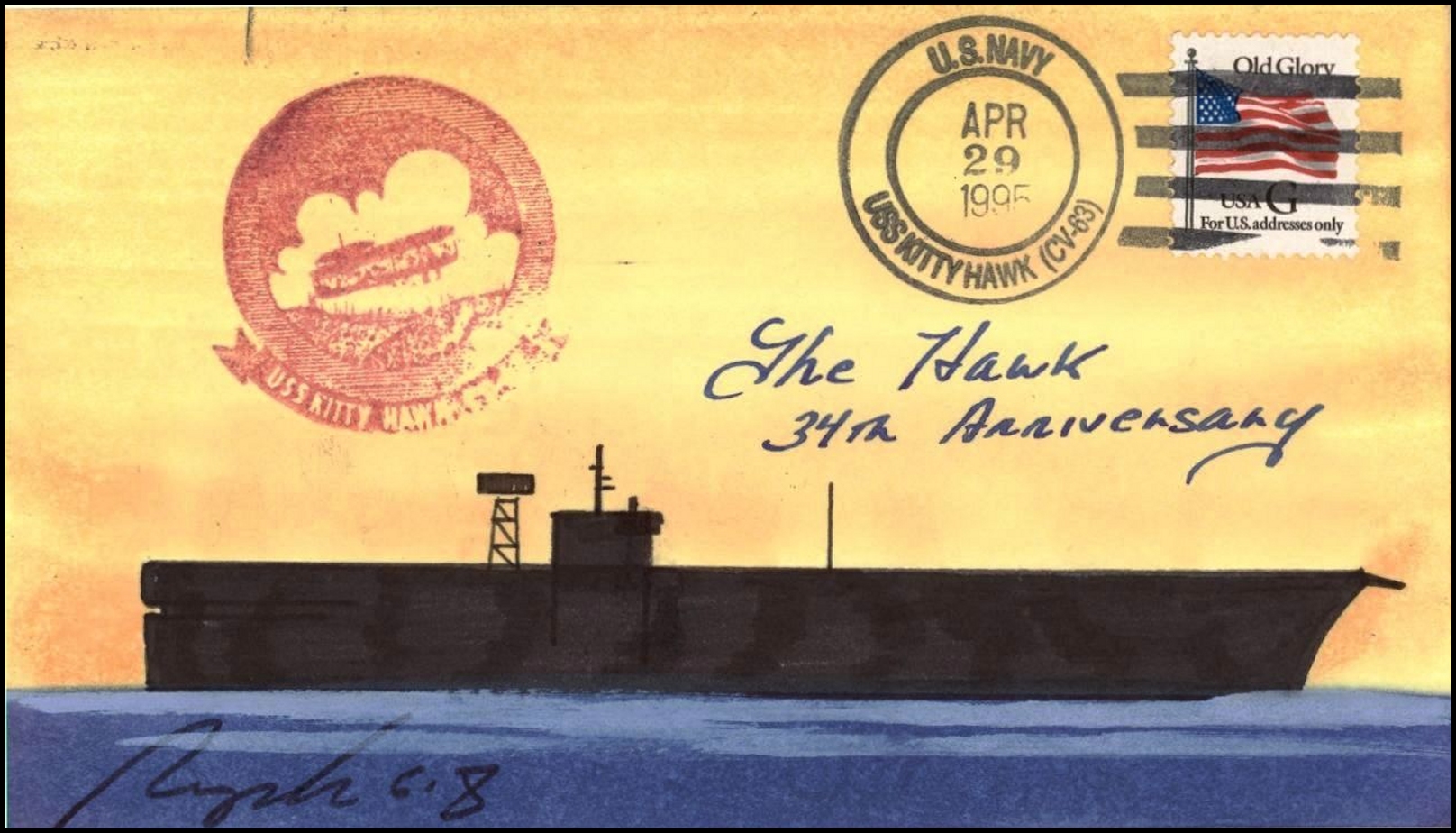 |
February 2010 Issue of the NJPH Journal featuring a 1995 cover of the aircraft carrier USS Kitty Hawk, the last of the conventionally-powered US aircraft carriers, decommissioned in 2009.
This great ship served almost 50 years in service of her country.
Read more..... |
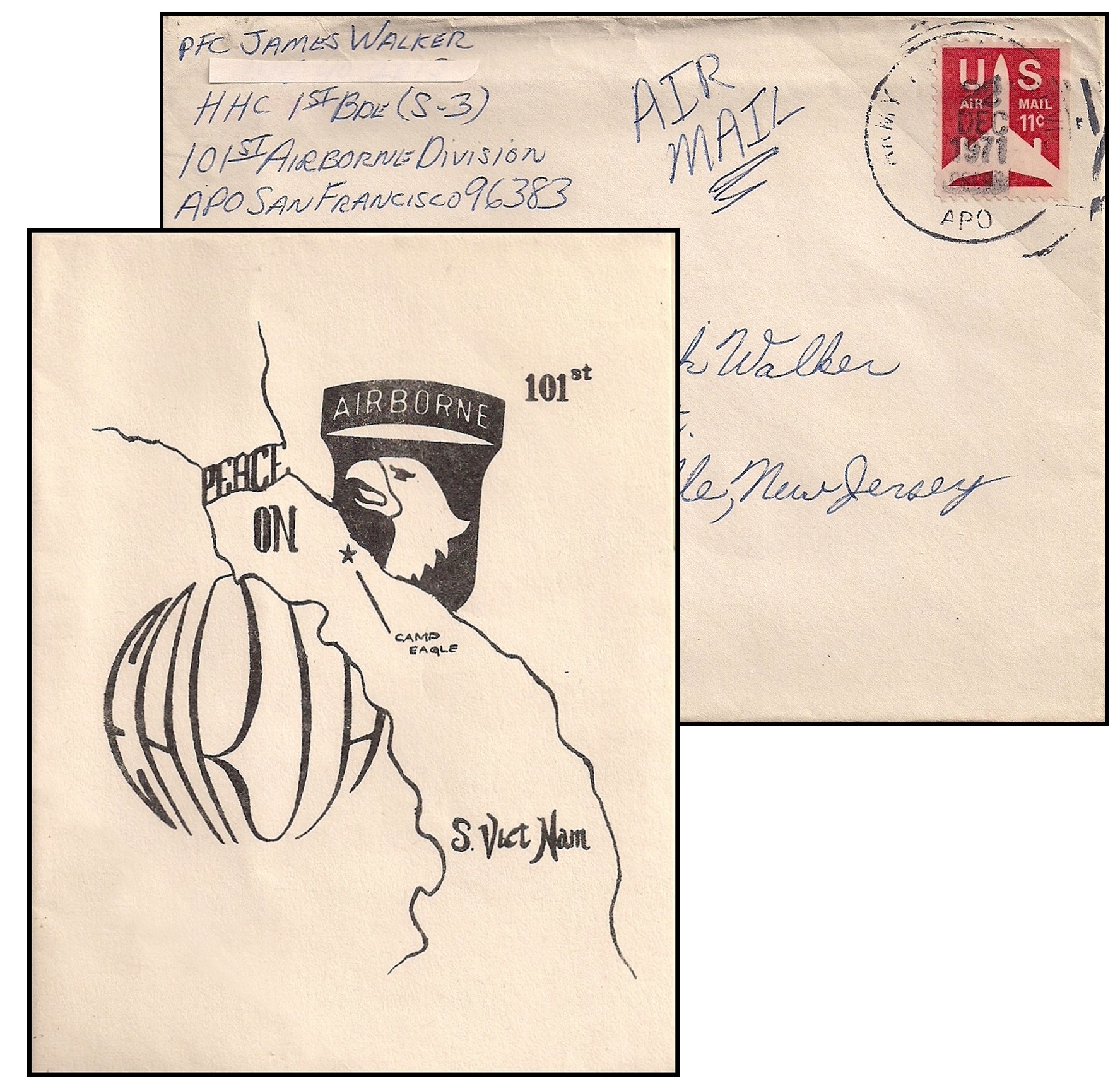 |
November 2009 Issue of the NJPH Journal featuring a Holiday Greetings from Viet Nam
Just before Christmas of 1971, a GI-produced Christmas card was distributed to the troops of the 101st Airborne for them to send home. A hand-made envelope served to carry it home to New Jersey.
As it was late in December, member Jim Walker used a U.S. air mail stamp instead of the usual free frank available to soldiers in combat,
Read more..... |
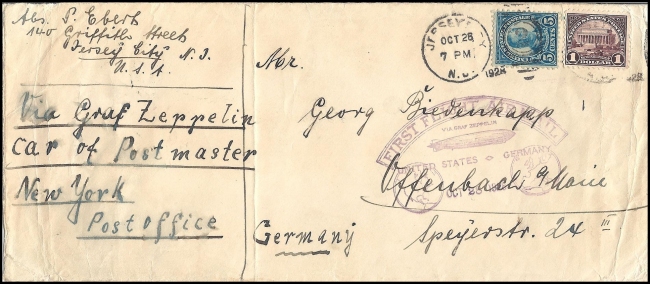 |
August 2009 Issue of the NJPH Journal featuring a a Graf Zeppelin cover.
L127 First Trip to the USA in 1928. Special credit to John Trosky for this nice article!
WEB-SITE SPECIAL: an addendum to this article with additional information on an originating 1928 LZ-127 cover from Len Peck!
Read more..... |
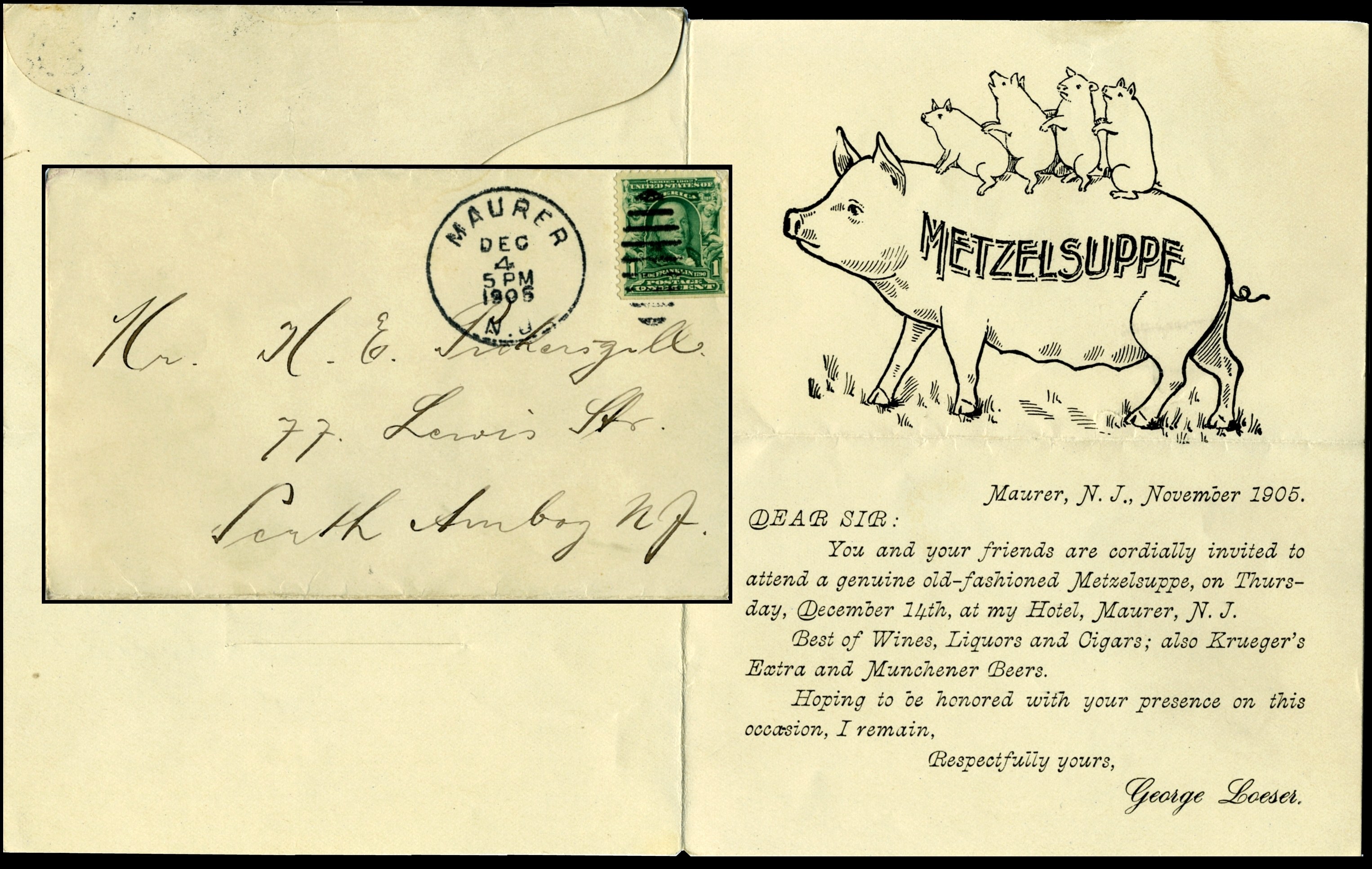 |
May 2009 Issue of the NJPH Journal featuring a DPO cover from Maurer, New Jersey.
A pretty little letter sheet invitation from a local hotel in Maurer (now part of Perth Amboy, Middlesex County), NJ turned up at the Garfield-Perry Show in Cleveland, in JWF (Jim Faber’s) stock. Used in 1905, it is from a community that literally does not exist anymore. The location is now the site of a large “tank farm” belonging to Chevron.Read more..... |
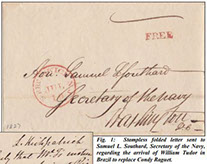 |
February 2009 Issue of the NJPH Journal featuring a cameo campaign cover.
A December 15, Hoboken, NJ postmarked Embossed Cameo Campaign Envelope produced by William Eaves was offered this March by Robert A. Siegel Auctions featuring a beardless Abe Lincoln. Only a few examples are known. This Hoboken, New Jersey cover hammered on March 25, 2009 for $2600.00 before the 15% buyers premium! Read more..... |
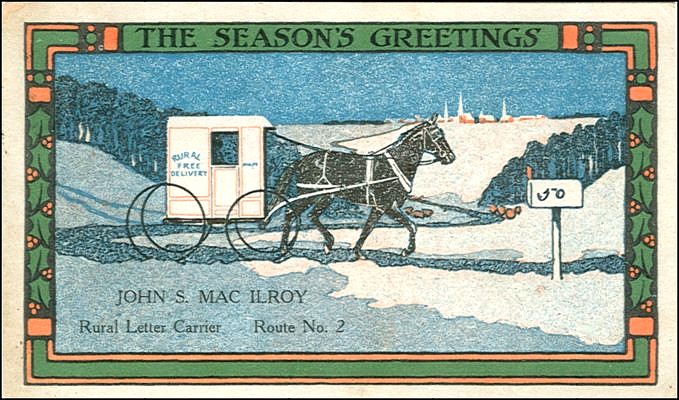 |
November 2008 Issue of the NJPH Journal featuring a cover of seasonal greeting.
A RFD ”Season’s Greetings” post card, cancelled December 24, 1915 with a Pittstown, NJ postmark, sent by the carrier on Route 2 out of Pittstown to the people along his route. Special thanks to Member Jim Walker for sharing this cover. Read more..... |
Members: One of the benefits of membership is sharing your interests and collections! If you would like to share an interesting single item from your collection, or have multiple items to share - the NJPHS Galleries offer you the opportunity to put your collectibles on center stage. Please e-mail your webmaster about contributing to our on-line Galleries. We can even help you if you do not have a scanner or digital images. Just ask. Remember, we are always looking for articles of interest for the NJPH Journal, and would welcome your contribution whether it's a single page or five page article.
If you are not yet a member, please consider the benefits of joining and the satisfaction you'll get by sharing with your fellow collectors: Become a Member |
